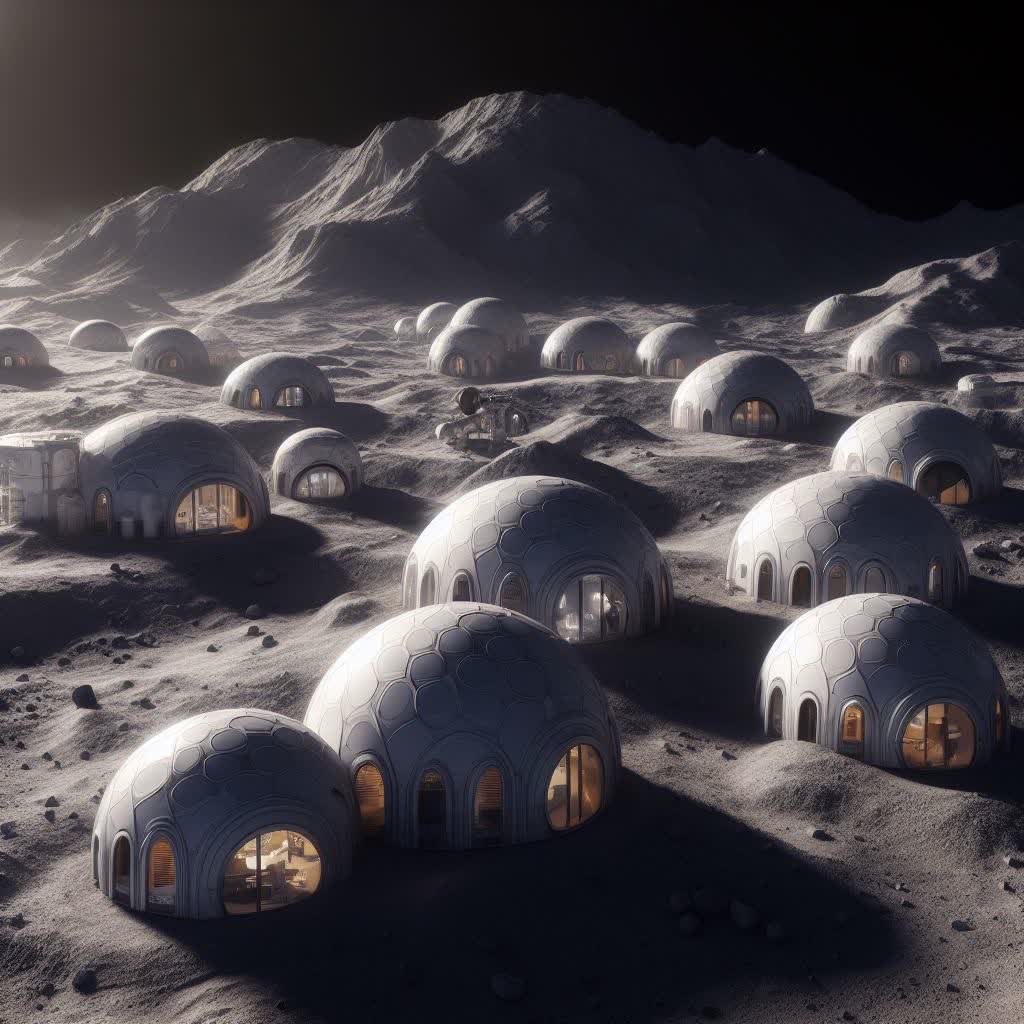Forward-looking: Sci-fi movies, shows, and books have long been filled with tales of humanity living in homes on the moon. It sounds like something most of us won't see, but NASA is planning for 3D-printed houses, occupied by both astronauts and civilians, to be in place by 2040.
In a report by the New York Times that interviewed seven NASA scientists, all said that the space agency's ambitious timeline of 2040 for lunar structures was achievable if it continued to hit its benchmarks.
"We're at a pivotal moment, and in some ways it feels like a dream sequence. In other ways, it feels like it was inevitable that we would get here," said Niki Werkheiser, NASA's director of technology maturation.
The plan involves sending a 3D printer to build the structures using lunar concrete from the rock chips, mineral fragments, and dust that sits on the top layer of the moon's surface.
NASA has partnered with ICON, an Austin, Texas-based construction company that uses a 3D printer to create homes, for the project. It has already created hundreds of structures using this method for the homeless in Austin, as well as hurricane-resistant houses in Mexico. The printer can build homes in as little as 48 hours.
ICON has been working with NASA since 2020, and it received $57 million in funding to build space-based construction systems in 2022.
3D-printing homes on the moon, and later on Mars, is obviously much more challenging than on Earth. The vacuum conditions and radiation levels are just two issues, but Fortune writes that ICON's system will be tested to see how it handles these in NASA's Marshall Space Flight Center next February. The structures will also need to protect against micrometeorites and extreme temperature.
NASA is also working to perfect a simulation of lunar concrete for testing on Earth, which can withstand temperatures of up to 3,400 degrees Fahrenheit.
"To change the space exploration paradigm from 'there and back again' to 'there to stay,' we're going to need robust, resilient, and broadly capable systems that can use the local resources of the moon and other planetary bodies," said ICON co-founder and CEO Jason Ballard.
For general household items such as doors, tiles, and furniture, NASA is working with universities and private companies.
NASA will also need to construct landing pads on the lunar surface for rockets carrying the 3D printer. These pads will help mitigate the dust that's kicked up upon landing.
"We've got all the right people together at the right time with a common goal, which is why I think we'll get there," Werkheiser said.
"Everyone is ready to take this step together, so if we get our core capabilities developed, there's no reason it's not possible," she added.
NASA added that it was too early to consider how much the lunar homes for civilians would cost or their ownership structure. The 1967 Outer Space Treaty declares that no one can own the moon.
The first step is the Artemis 2 mission, which will send astronauts into the moon's orbit next year. Humans will return to the lunar surface in 2025 or 2026 during the Artemis 3 mission. It will land on the lunar South Pole with the help of SpaceX's Starship.
https://www.techspot.com/news/100392-nasa-envisions-3d-printed-homes-moon-2040-astronauts.html
